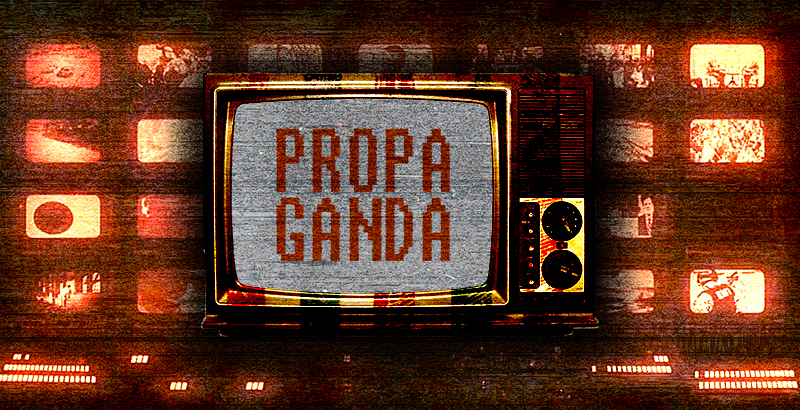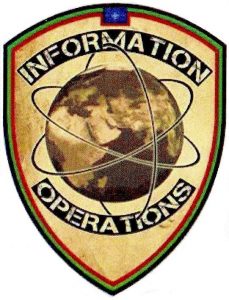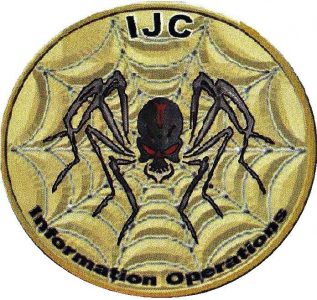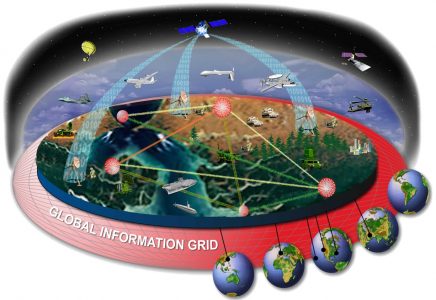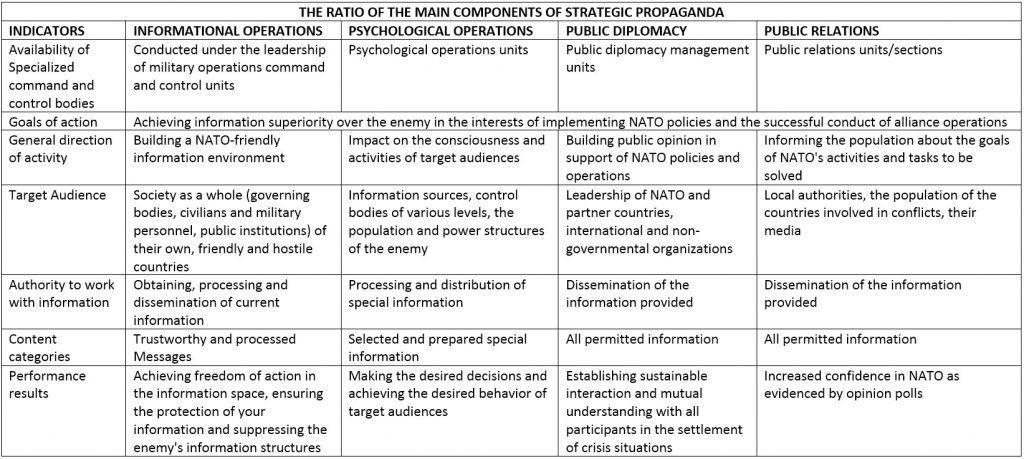On December 12, SouthFront released a translation of the analytical article entitled “Western Strategic Propaganda To Contain Russia”. The following text originally appeared in the “Foreign Ministry Review” publication in 2014. Nonetheless, it is still useful to understand the concept of the strategic propaganda and how it is used by the NATO.
Written by Colonel V. Olevsky; Originally appeared at Foreign Military Review 2014 #9, translated by Mona Lita exclusively for SouthFront
One of the characteristic features of the modern era is the rapid development of electronic means of disseminating information, which contributes to the steady growth of the influence of subjective factors on world politics, including preparation and operations conduct to resolve crises. The experience of using non-violent means to solve political and military tasks during a number of campaigns in recent decades has demonstrated the high effectiveness of targeted information and psychological impact (IPA) on active and indirect participants in conflicts, which often exceeded the direct benefits obtained during military operations. According to Western experts, the rational use of information resources makes it possible to control public opinion up to the point of changing the value system of broad masses, and manipulation of information can radically change the perception and behavior of selected (target) audiences. As a result, information superiority over the enemy began to be viewed as the most important factor in achieving victory in modern warfare.
In these conditions, the leadership of the Alliance was forced to radically reconsider their views on traditional means, methods and forms of information and psychological warfare, which is reflected in the new concept of the so-called Strategic Communications, which emerged as part of the much-publicized “Comprehensive Approach” to crisis management. An important area of its implementation was to ensure the coherence of the use of military and civilian information tools to achieve the global goals of the alliance in peacekeeping activities.
The emergence of “strategic propaganda” became a further development of the doctrine of indirect actions, which consists in influencing the consciousness of those groups of population on which the adoption of key socio-political state decisions depends. In this case, the required effect is achieved “by influencing individual, non-main elements of the system, the change of which leads to the transition of the system to the required state.”
The main provisions of this concept are enshrined in the relevant basic documents approved by the NATO Council, in which “strategic propaganda” is defined as the process of pooling of available information resources for their coordinated use in order to effectively promote the alliance’s policy and support it in conducting military operations.
The block’s theoreticians borrowed the idea of ”strategic propaganda” from their American colleagues, who not only introduced new approaches to organizing information and psychological confrontation, but also introduced into circulation a number of original terms to disguise the true goals of US actions on the ideological front.
The directive of the US Secretary of Defense had a programmatic significance for the development of the conceptual apparatus of the new idea, which back in 1998 approved the “Joint Doctrine of Information Operations” and for the first time used the expression “Strategic Information Warfare”. It also revealed the forms and methods of complex Info-psychological warfare on the enemy, tested in practice during military campaigns in Iraq (Operation Desert Fox, 1998) and Yugoslavia (Allied Force, 1999), and later refined and consolidated on the basis of combat experience obtained in Afghanistan. In its final form, the aforementioned doctrine was set forth in the Pentagon’s directive “Strategic Propaganda Roadmap” (2006).
Based on the recommendations of American specialists, the documents of the Alliance instruct the coalition bodies of “strategic propaganda” to concentrate their main efforts on assisting the block commanders in solving the tasks of “peacekeeping” operations, mainly by bloodless methods. At the same time, in order to ensure a massive impact on target audiences (state and military leadership, personnel of the enemy Armed Forces, the local population, the world community), it was decided to bring the information and propaganda activities of the NATO Allied Forces to a qualitatively new level and create conditions for its transformation into one of the main types of support for military operations, comparable to intelligence. The implementation of this provision provides for an increase in the efficiency of actions in the information field through the introduction of modern social technologies, as well as expanding the interaction of all military and civilian information and propaganda structures.
According to the theorists of “strategic propaganda”, its goal is to promptly bring “truthful and accurate information” to friendly or hostile target audiences, which should allow them to “correctly understand and evaluate the plans and actions of the alliance.” At the same time, the bloc’s leadership cynically admits that “strategic propaganda smooths out the discrepancies between NATO’s statements and reality.”
An important part of “strategic propaganda” within the framework of the new concept is the NATO common information space (CIS), which is regarded as an integral part of the global information environment and at the same time is one of the components of the combat (operational) space. In accordance with the theory of network-centric (information-network) wars, one of the necessary conditions for achieving the goals of a military operation is the establishment of dominance in the information space and the creation of a basis for large-scale dissemination of necessary socio-political views among the population and armed forces of both their own and other states.
A characteristic feature of the CIS concept is the ability to automatically connect users of all levels to the global information network in order to obtain the necessary evidence. Proceeding from this, the formation of a common NATO information space should ensure a comprehensive process of a tangible scale of receiving (extracting) messages and facilitating the effective use of all components of strategic propaganda to support the operations carried out by the bloc. At the same time, the officers of the command and staff structures, who are in charge of strategic propaganda in the theater of operations, have the opportunity directly from their automated workstations at the stationary control center through CIS to remotely control the specialists and journalists located in the area of operation.
According to author’s definition of concept, the information environment includes the information itself, individual subjects, organizations and systems that extract (or receive), process and transmit this information, as well as the physical and virtual space where it is distributed. According to its functional purpose, the Alliance’s CIS has information-combat and information-propaganda components, each of which unites three interrelated groups of elements: information-administrative , extractive and executive.
Information-administrative elements represent coalition and national bodies and control points responsible for organizing “strategic propaganda”, automated control and communication systems that ensure their functioning, as well as geographically distributed information bases provided to users in accordance with the obtained admission.
In the interests of developing a unified system for managing the information activities of the Alliance, it was decided to clarify and expand the functional responsibilities of all levels of the governing and working bodies of NATO in organizing information and psychological warfare when resolving armed conflicts.
The overall leadership of the “strategic propaganda” of the alliance is entrusted to the NATO Council and the Secretary General of the organization, who determine the information policy of the alliance and coordinate the efforts of all its members. The Secretary General ensures the development of appropriate guidelines on this issue for all military and civilian structures in accordance with the decisions of the supreme governing bodies of the bloc. In response to a specific crisis, the NATO Council endorses the “strategic propaganda” recommendations contained in the forthcoming operation plan.
Alliance and partner outreach activities are coordinated by the NATO Assistant Secretary General (Head of International Staff) for Public Diplomacy. He also oversees the work of the Military Committee, the International Military Staff and the Alliance’s Strategic Commands in the field of “strategic propaganda.” However, his powers exclude interaction with the media, since this responsibility is assigned to the bloc’s press secretary.
An important place in the system of the highest military bodies is occupied by the NATO Military Committee, which is responsible for the development and implementation of plans for information and psychological confrontation, as well as for maintaining public relations. With the involvement of dependent information and analytical and command and staff structures, this body provides the preparation of conceptual and policy documents on the issues of “strategic propaganda”, carries out general management of the conduct of information and psychological operations (IPO), ensures the interaction of military bodies with the public, determines the needs for forces and means to solve information and propaganda tasks, and assists lower headquarters in achieving the goals of strategic propaganda.
The Military Committee is under the NATO International Military Headquarters, which is directly involved in solving all practical problems of information and psychological confrontation in the process of resolving crises. The Operations Directorate, part of this headquarters, is responsible for implementing the instructions of the NATO Military Committee on IPO issues, and also facilitates the establishment of contacts with the strategic commands in the preparation and conduct of these operations.
The public relations adviser of the bloc’s International Military Staff oversees the activities of all military structures in the field of “strategic propaganda”, ensures their interaction with the highest governing bodies of the alliance and organizes public information on all issues of its military policy.
Within the NATO command and control system, at the strategic level, there are two commands that conduct massive information and propaganda activities in accordance with the instructions of the organization’s headquarters. In particular, the Strategic Command of Operations, headed by the Supreme Commander of the Alliance Joint Armed Forces, participates in the development of plans for information and psychological operations, and after their approval by the Military Committee, monitors the work of the relevant commands and assists them in carrying out the IPO. Proposals to the Supreme Commander on the solution of these tasks are prepared by an adviser on “strategic propaganda”.
NATO’s Strategic Reform Command is responsible for conceptualizing and developing “strategic advocacy” capabilities, including training of related personnel. To coordinate the actions of all information and propaganda formations participating in military operations, the post of chief of the strategic propaganda service of the North Kazakhstan region (in the rank of brigadier general) was introduced. In addition, both Strategic Commands have PR managers who are responsible for liaising with representatives of international and non-governmental organizations and ensuring that all segments of the public are informed.
To implement the comprehensive information strategy approved by the North Atlantic Council to achieve the goals of the ongoing military operations, specialists from all the main areas of “strategic propaganda” (IPO, public diplomacy, public relations) are included in the operational teams for crisis management (headed by the Secretary General of the Alliance or his deputy) ), as well as military-civilian interaction.
An important place in the system of command and control bodies of interspecific groupings of troops (forces) is occupied by subunits that ensure the complex use of forces and means of “strategic propaganda.” Thus, in the operational level of the NATO Joint Armed Forces, when deploying an advanced inter-service headquarters, it is envisaged to form three functional groups: information operations, psychological operations and public relations. In addition, a council for the coordination of information operations is created under the commander of the inter-service grouping of coalition forces (forces), the work of which is directed by the commander’s adviser on “strategic propaganda”. Similar command and staff structures responsible for organizing the IPV are also being established at all other levels of the NATO command and control system.
Retrievable elements of the information and propaganda area include specialized information bodies and technical means that collect, preprocess and deliver information to the interested executive structures of information consumers, as well as intelligence units that exchange data with “strategic propaganda” units. Their main focus is on carefully selected and properly prepared information. In this regard, the information and physical spheres of information carriers act as extractive elements.
Information spheres include: radio, television, print, the Internet, video streaming, mobile phones, civil society organizations, official structures, oral communications and rumors, etc. Important sources of information are official documents and information materials of military command bodies, statements and comments of authoritative leaders and competent specialists, reports from the scene, eyewitness accounts, media reports, etc. It is no coincidence that one of the documents of the NATO Military Committee on “strategic propaganda” notes that “every action, word or image contains information, and all participants in military events – from a soldier to a military commander – are carriers of important information.”
Physical spheres of information carriers – military exercises, demonstration and use of force, mass events and group contacts, recovery work, humanitarian assistance, the system of trade and material and household support, etc.
A special place in the structure of information gathering elements is occupied by intelligence structures that exchange data with subdivisions of information and psychological operations. NATO’s concept of “strategic propaganda” directly appoints establishing and developing close cooperation with intelligence units on the collection, analysis, assessment and distribution of materials of interest.
At the same time, the interspecific exchange of intelligence information currently being introduced provides for the continuous flow of processed information into centralized databases, which can be received (upon request or in automatic communication mode) by all interested employees if they have special network devices and appropriate access rights to information.
An important role in the initial processing and distribution of intelligence and information materials is played by the NATO Situation Assessment Center (Situation Center), operating as part of the Organization’s International Secretariat and subordinate to the Assistant Secretary General – the Chief of Operations. The center monitors the military-political situation in all regions of the world around the clock and quickly communicates it to the leadership of the alliance and interested respondents.
In order to simplify the process of information support, the transition to new standards of the block is being carried out, which make it possible to establish not only uniform formats for presenting various information and intelligence exchange protocols, but also other important parameters (composition and structure of intelligence databases and corresponding metadata, as well as the procedure for their transmission , processing and storage).
To implement this concept, it is planned to form an integrated information and network infrastructure of the CIS, the communication component of which will be formed on the basis of the global information grid (GIG), and the basis of the information component will be geographically distributed databases of heterogeneous information, integrated into a single information space using a universal Internet protocol.
In addition, in the interests of the formation of the CIS, the governing bodies of the alliance closely cooperate with all interested information and propaganda structures and coordinate their activities at all stages of preparation and conduct of operations.
The executive elements of the informational-propaganda area are all active components of “strategic propaganda”, the media and technical systems involved in bringing the processed information to target audiences and using it to achieve coalition goals. In accordance with the new approach, the main distinguishing feature of their application in the course of resolving crisis situations is the coordination of actions based on common leadership and unified planning.
The key executive components of “strategic propaganda” include the forces and means of information and psychological operations of the NATO Allied Forces, structures of the so-called public diplomacy, as well as military and civilian public relations bodies. In addition, subdivisions of communications, intelligence, electronic warfare, special operations, bodies of military-civil interaction, representatives of international and non-governmental organizations, as well as the media, including using the global Internet, are actively involved in this activity.



